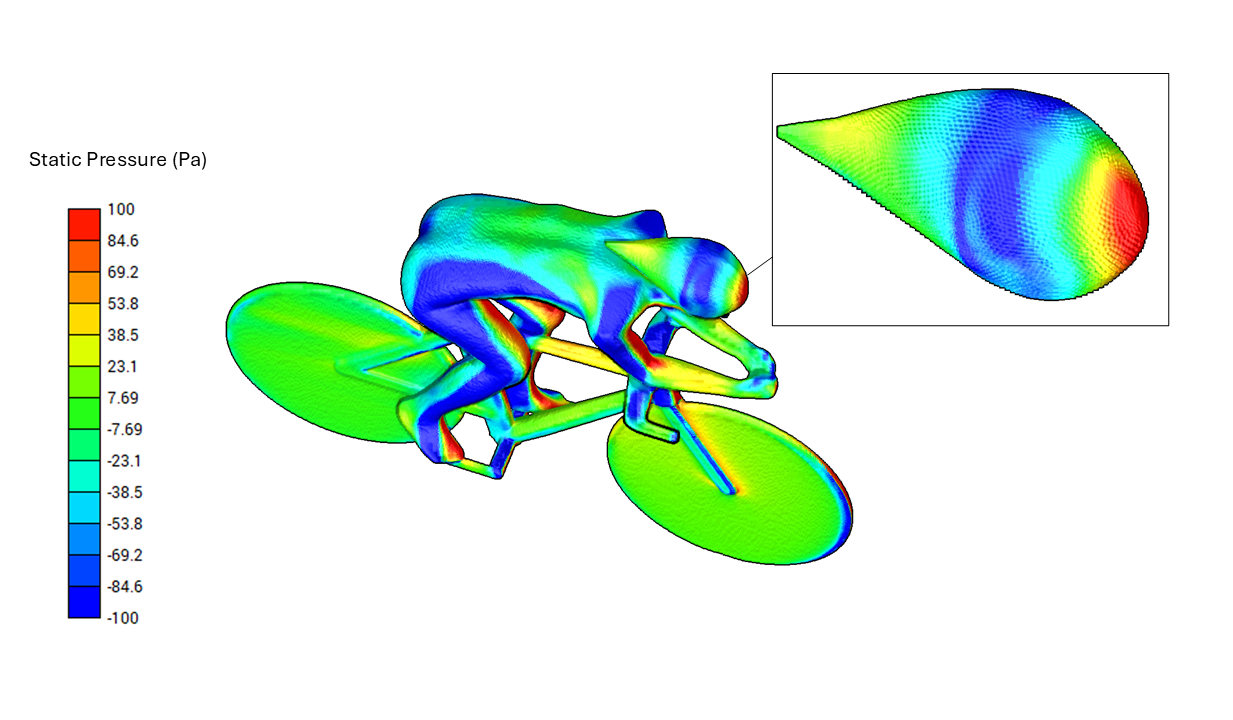We are pleased to announce the latest research from the University of Rome Tor Vergata, which leverages RBF Morph technology for groundbreaking advancements in sports aerodynamics.
The paper, titled “Reduced-Order Model of a Time-Trial Cyclist Helmet for Aerodynamic Optimization Through Mesh Morphing and Enhanced with Real-Time Interactive Visualization”, is now published in MDPI. This collaboration features contributions from Emanuele Di Meo, Andrea Lopez, Corrado Groth, Marco Evangelos Biancolini, and Pier Paolo Valentini.
This study introduces a cutting-edge methodology for optimizing time-trial cycling helmets using advanced simulation techniques, including:
- Computational Fluid Dynamics (CFD)
- Radial Basis Functions (RBF)
- Mesh Morphing
- Response Surface Methodology (RSM)
At its core, the research delivers a Reduced-Order Model (ROM) that revolutionizes aerodynamic optimization by significantly enhancing efficiency during the design phase.
Key Findings:
✔︎ Achieved a 10% reduction in drag force through morphing configurations derived from a baseline teardrop profile.
✔︎ Demonstrated the ROM’s capability to analyze turbulent flow patterns on a cyclist’s body, offering unprecedented insights into aerodynamic interactions.
✔︎ Provided practical contributions to helmet design refinement, supporting performance improvements in time-trial cycling.
This pioneering work showcases the immense potential of ROMs and advanced CFD technologies to streamline workflows in aerodynamic optimization and deliver high-performance sports equipment.
Read the full paper here.



